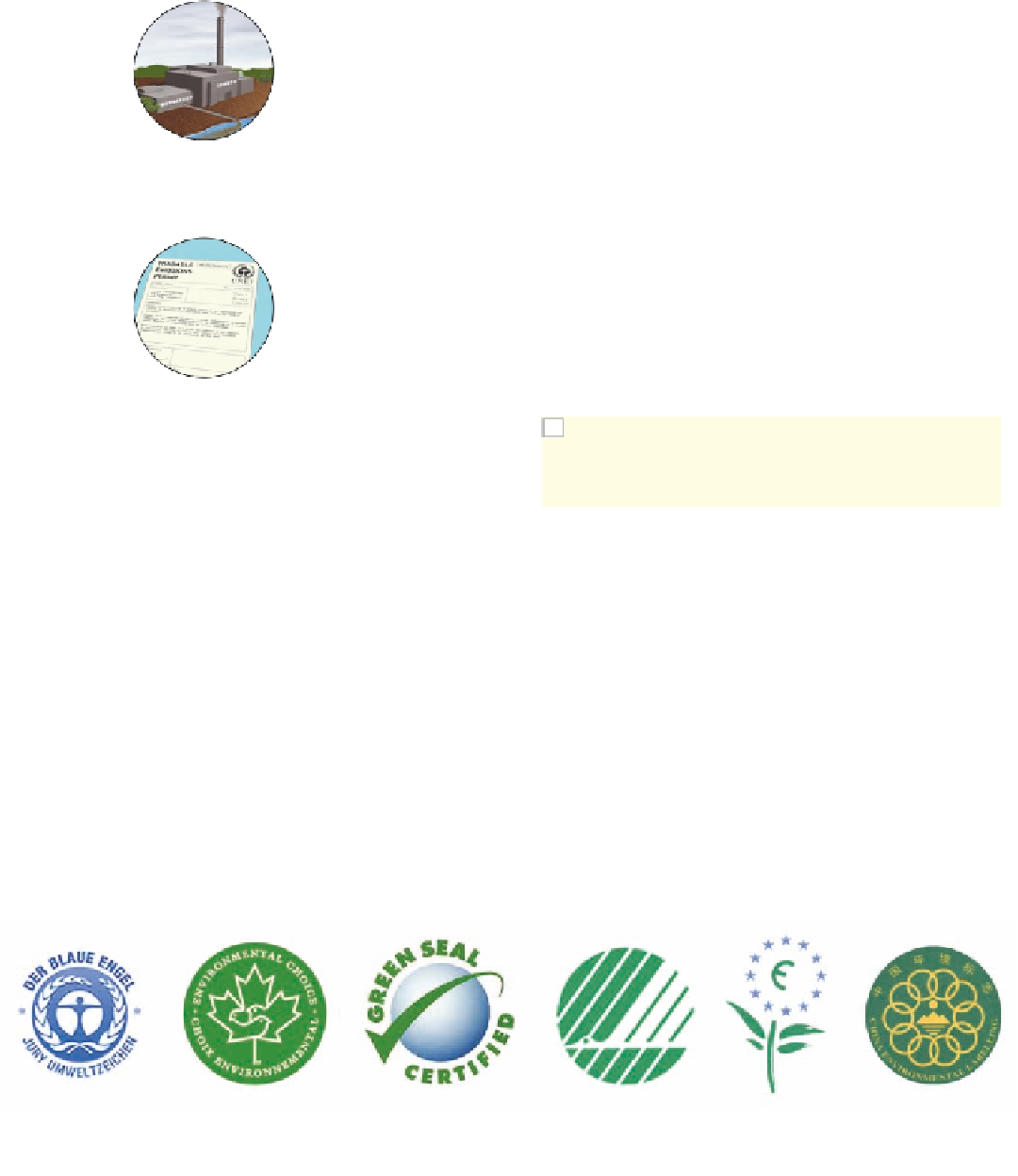Environmental Engineering Reference
In-Depth Information
example, the government could set a limit or cap on to-
tal emissions of a pollutant or use of a resource such as
a fishery. It would then issue or auction permits that al-
locate the total among manufacturers or users.
A permit holder not using its entire allocation
could use the permit as a credit against future expan-
sion, use it in another part of its operation, or sell it to
other companies. In the United States, this approach
has been employed to reduce the emissions of sulfur
dioxide and several other air pollutants. Tradable rights
can also be established among countries to help pre-
serve biodiversity and reduce emissions of greenhouse
gases and other pollutants with harmful regional or
global effects.
Figure 18-9 lists the advantages and disadvan-
tages of tradable pollution and resource-use permits.
The effectiveness of such programs depends on how
high or low the initial cap is set and the rate at which
the cap is reduced. However, this approach can allow
major polluters and resource wasters to buy their way
out instead of making technological improvements.
The result: hot spots of pollution, land degradation,
and resource depletion.
T rade-Offs
Tradable Environmental Permits
Advantages
Disadvantages
Flexible
Big polluters and
resource wasters
can buy their way out
Easy to
administer
May not reduce
pollution at dirtiest
plants
Encourages
pollution
prevention and
waste reduction
Can exclude small
companies from
buying permits
Caps can be too low
Caps must be
gradually reduced to
encourage
innovation
Can promote
achievement of
caps
Determining caps is
difficult
Permit prices
determined by
market
transactions
Must decide who
gets permits and
why
x
Administrative costs
high with many
participants
H
OW
W
OULD
Y
OU
V
OTE
?
Do the advantages of using trad-
able pollution and resource-use permits to reduce pollution
and resource waste outweigh the disadvantages? Cast your
vote online at http://biology.brookscole.com/miller11.
Confronts ethical
problem of how
much pollution or
resource waste is
acceptable
Emissions and
resource wastes
must be monitored
Self-monitoring can
promote cheating
Eco-Labeling
Labeling environmentally beneficial goods and
resources extracted by more sustainable methods can
help consumers decide which goods and services to
buy.
Product eco-labeling
can encourage companies to de-
velop green products and services and help consumers
select more environmentally beneficial products and
services. Eco-labeling programs have been developed
in Europe, Japan, Canada, and the United States (for
example, the
Green Seal
labeling program that has cer-
tified more than 300 products; see Figure 18-10).
Confronts
problem of how
permits should
be fairly
distributed
Sets bad example by
selling legal rights to
pollute or waste
resources
Figure 18-9
Trade-offs:
advantages and disadvantages of us-
ing tradable resource-use permits to reduce pollution and re-
source waste.
Critical thinking: pick the single advantage and
disadvantage that you think are the most important.
Germany:
Blue Angel (1978)
Canada:
Environmental
Choice (1988)
United States:
Green Seal (1989)
Nordic Council:
White Swan (1989)
European Union:
Eco-label (1992)
China:
Environmental
label (1993)
Figure 18-10
Solutions:
symbols used in some
eco-labeling
programs that evaluate green or environmentally
favorable products.







